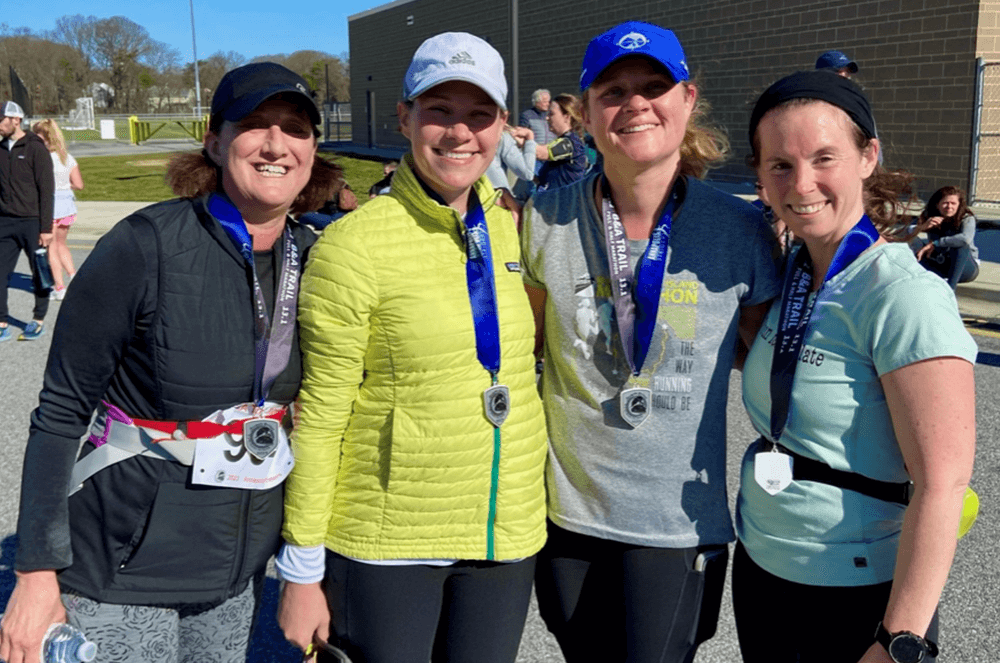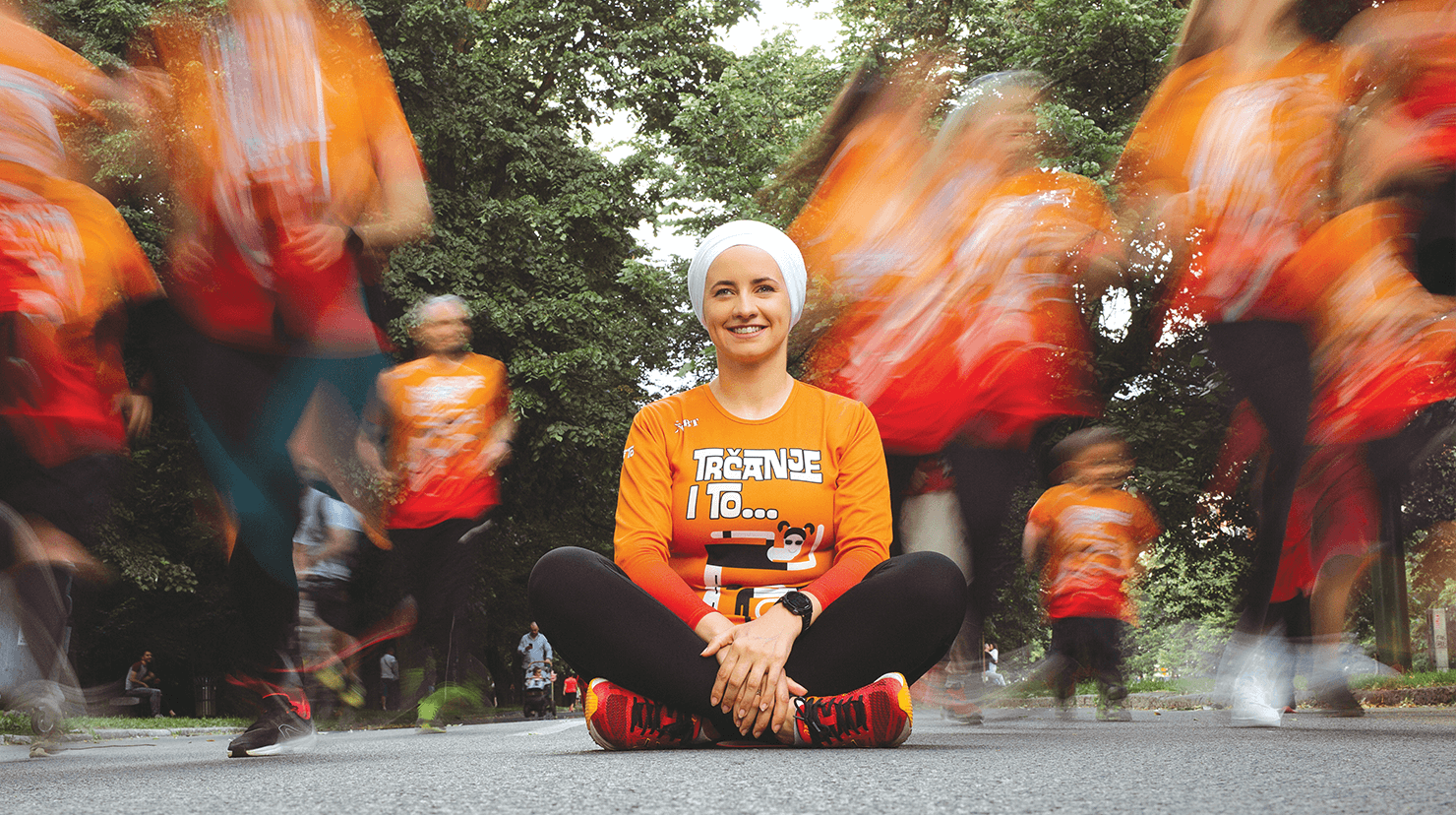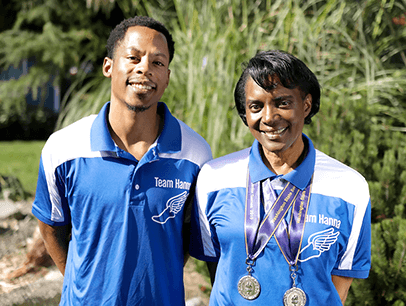
In early 2023, I trained for and ran the Baltimore/Annapolis Half-Marathon (13.1 miles/21 km) in Maryland. As a longtime runner who missed races during the pandemic, it felt amazing to complete it with several running friends.
During training, I developed pain in my right hip; a health professional recommended a running analysis to see if there might be ways to prevent, rather than just treat, the pain. I did the running analysis. Turns out, I drop my left hip each time my left foot strikes the ground. And I strike the ground with my right heel. And I scissor my right foot over the midline of my body. And I ever-so-slightly drag my left foot with each stride. YIKES!
As the physical therapist pointed all this out in a slow-motion video on an iPad, I started to feel overwhelmed. How could I possibly fix all these issues? Would I be able to continue to run long distances without pain?
If you feel overwhelmed by having to fix too many things in your speaking, start by changing one behavior rather than focusing on five or six.
Perhaps as a Toastmaster, you can relate to this experience when you watch a video of yourself speaking. If we have certain problematic speaking habits, video exposes all of it. Or what about when a speech evaluator points out multiple communication behaviors that may not be serving the speaker well? Often the speaker can easily observe or acknowledge the issues but doesn’t know how to remedy them and starts to feel overwhelmed and discouraged.
The good news, in both running and public speaking, is that one behavior change can have a ripple of positive effects. In the case of my gait, the physical therapist suggested that I start by increasing my cadence, or the number of times my feet touch the ground per minute. When I did that one thing—despite feeling really awkward in the beginning—other positive running patterns fell into line, such as maintaining proper hip and foot alignment.
If you feel overwhelmed by having to fix too many things in your speaking, keep that strategy in mind. Start by changing one behavior rather than focusing on five or six. As a presentation skills coach, I always encourage this approach with my clients. These are some behavior changes that trigger other positive effects in public speaking.
- Pausing in silence to reduce “ums” and “ahs” can also reduce distracting physical movements, like swaying and fidgeting.
- Rehearsing a presentation six times can help increase eye contact and decrease nervousness.
- Incorporating a story or anecdote into your speech can make facial expressions and hand gestures more animated, authentic, and engaging.
- Breathing deeply between crisp sentences can improve posture, volume, and speaking rate.
- Using a standing desk rather than a chair for an online presentation can boost energy and expressiveness.
- Speaking loudly can eliminate a quiver in the voice and reduce upspeak—a rising intonation that unintentionally sounds like asking a question—at the end of declarative sentences.
If you prefer to slow things down, this Toastmasters Podcast episode features the author, Christine Clapp, who enlightens listeners about the connection between yoga and public speaking.
Is it easy to change your speaking behaviors or your running gait? No. But it doesn’t have to be overly complicated either. In fact, one of Toastmasters International founder Dr. Ralph C. Smedley’s guiding principles was to “keep it simple,” exemplified by the organization’s learn-by-doing format.
In the months since my running analysis, my gait improved, and I can now run without pain! So, if you want to feel less pain and reach your full potential as a public speaker, schedule your next Toastmasters speech or sign up to compete in a club speech contest. Then, refer to your Pathways project or ask a trusted club member to help you identify one specific speaking behavior to tweak.
As with running, making a small change in your speaking habits will likely feel awkward and uncomfortable at first. But stick with it, because it can also cause a ripple of positive effects that helps you to significantly and sustainably improve your performance in a short amount of time.
Christine Clapp, DTM is the founder and president of Spoken with Authority, a presentation skills consultancy that elevates the presence and expands the influence of subject-matter experts, leaders, and emerging leaders. She is the co-author of three books, most recently Presenting Now: A Guide to Public Speaking and Leadership Communication Online, in Person, and Beyond.
Related Articles

Profile
Running with a Dream

Personal Growth
Yoga and Public Speaking

Profile



 Previous
Previous

 Previous Article
Previous Article